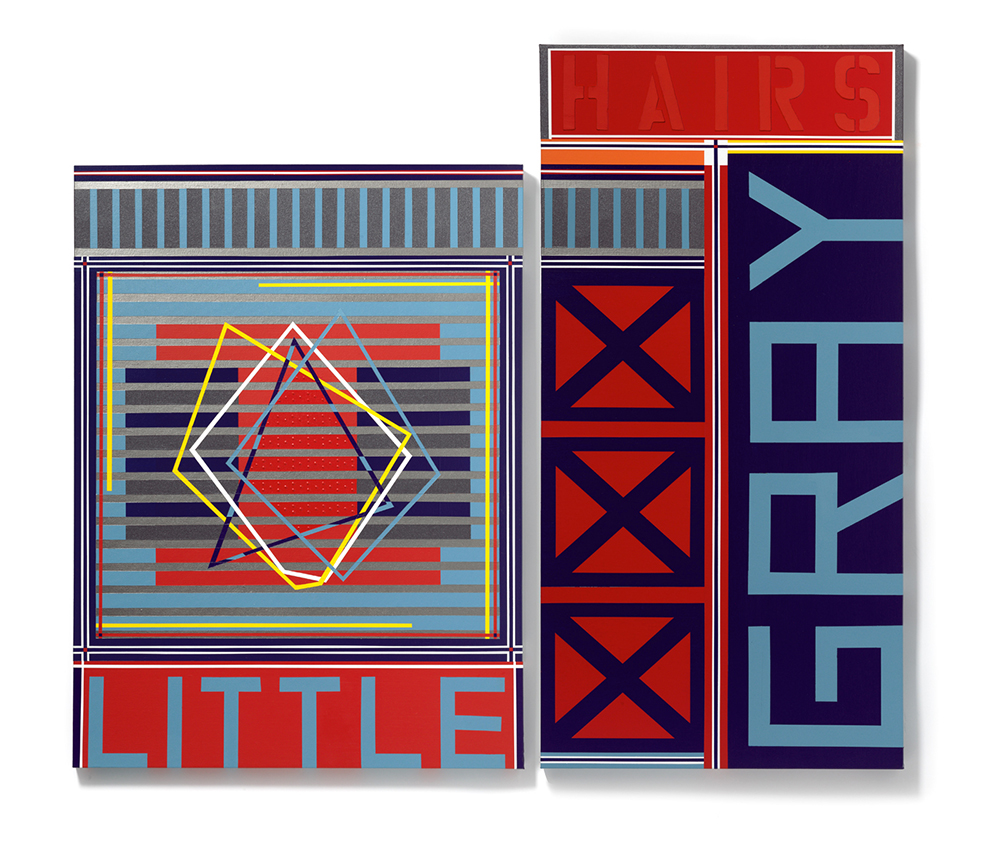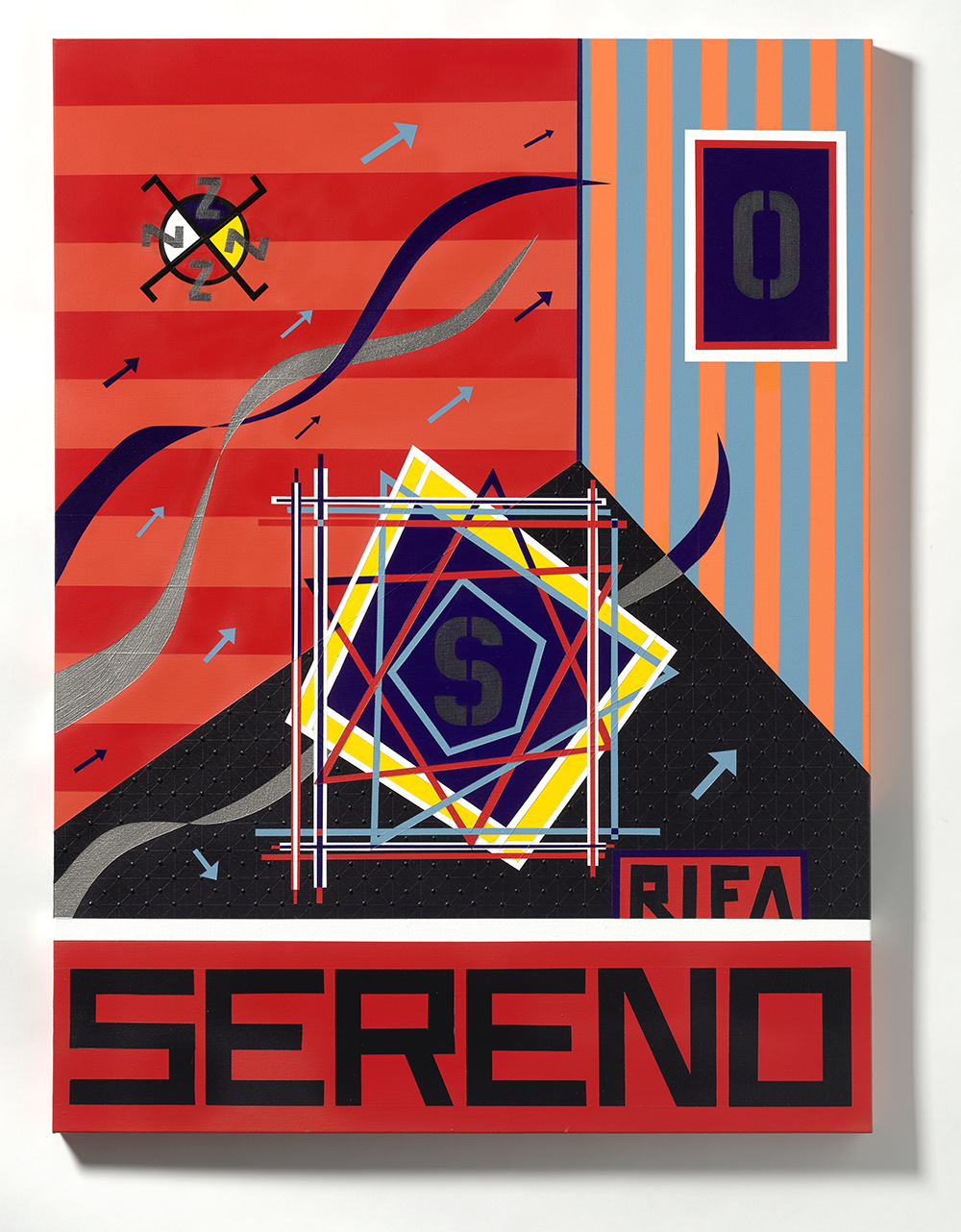Curated by Nicolas Orozco-Valdivia, Linda Arreola’s “Abstract Wanderings From the LA Borderlands: 2020–2023” comprises the artist’s strongest work to date. The presentation of nine paintings, some in multi-panel formats with varying scales, can scarcely be contained in the gallery’s unassuming space—a testament to her formidable command of form, color and bridled ferocity. Reflective of her architectural training, her techniques culminate in complex and symbolic narratives. It’s a common misconception that Chicana artists are identified with—and manifest ideas within—a realist, figurative framework. Not so—or at least, not all. Historically, abstraction, with its focus on nonobjective elements of shape, form, color and line, is frequently positioned as the purview of certain mid-20th-century artists—the West Coast established its own hierarchy with such artists as Karl Benjamin, Helen Lundeberg and Sam Francis.
Arreola’s practice is often placed within the rubric of “Chicana abstraction,” but I’m not convinced that is an appropriate descriptive. Fundamentally she breaks new ground as an alternative tradition within American hard-edged painting. As the artist states: “… my interest has been in honoring the simple, the common and the elemental.” Her current series is seething with vibrant color—which is its own reward—as well as grids, text, phrases, glyphs and indigenous symbology as consequential structural elements. Her paintings often entice the viewer with a compelling elusiveness while maintaining an inherent connection to the everyday, the communal and the contemporary social milieu.

Linda Arreola, Little Gray Hairs, 2023. Courtesy of the artist.
The sentimental, if symbolically complex work, Sereno (2023) gets to the heart of Arreola’s personal motivations. An homage to her Los Angeles neighborhood, El Sereno, the picture weaves the area’s complex social dynamic with striking uses of text and color, indigenous cyphers, gang-tagging signs and cosmology, all coexisting and backgrounded by an energetic palette acting as narrative guide. It’s an alluring optical juggling act.
Dump (2022) echoes the existential menace of the 2017–21 presidential administration; the picture employs a muted palette reading as a threatening military insignia. It’s a sobering take on a historical aberration. The diptych Little Gray Hairs (2021) confronts the specter of aging and mortality—something many contemplated during the pandemic. But it’s rooted in an authentic desire to embrace what is ahead of us. This is not a fatalist or somber picture, rather one with a fair degree of optimism—a poignant, universal expression. We all travel that road.
The exhibition is rife with an adventurous sensibility and skillful virtuosity, and Arreola—in full control—takes us along for the ride.


